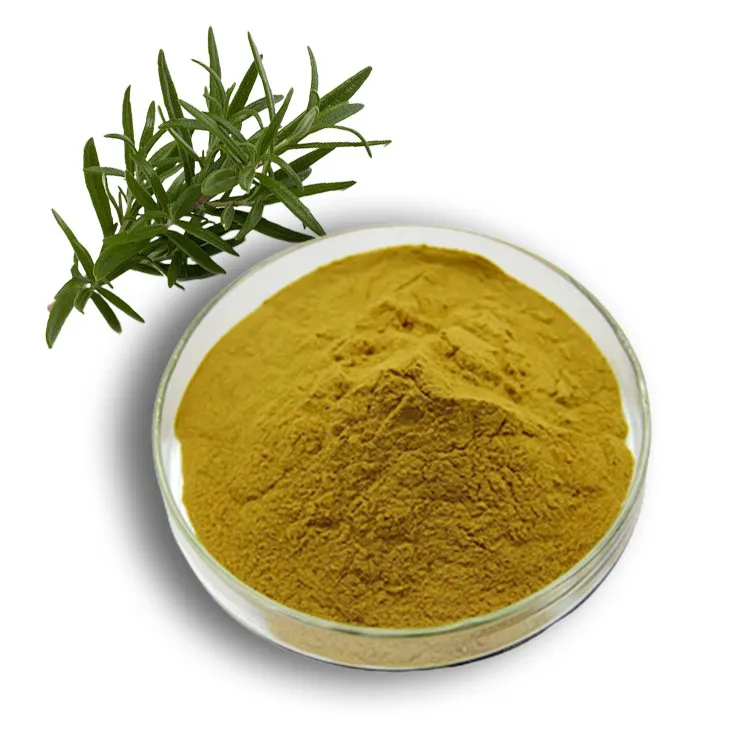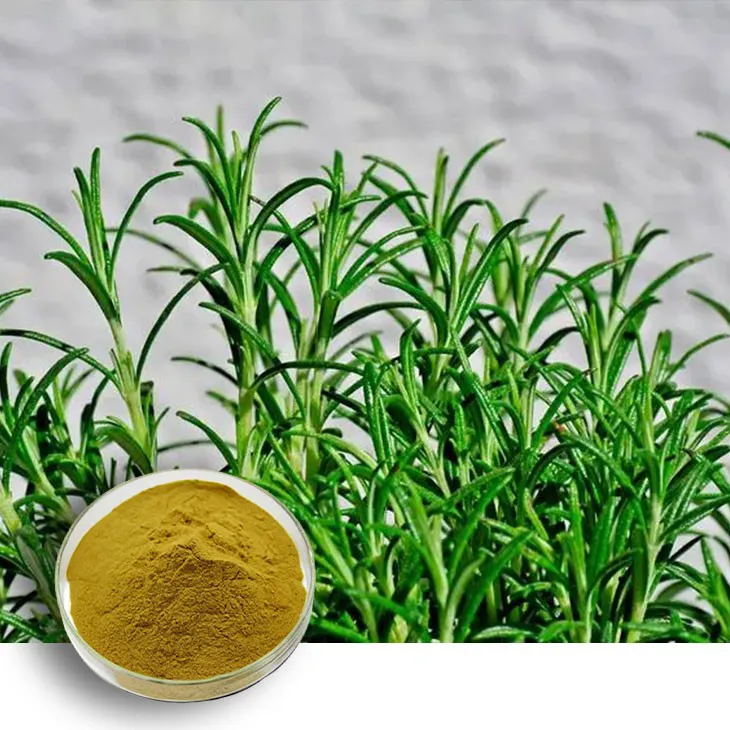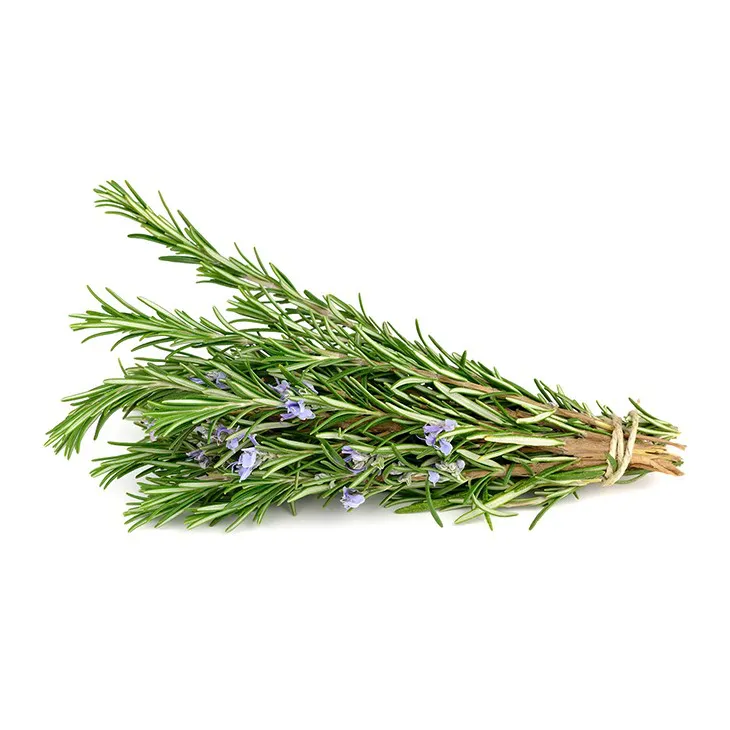- 0086-571-85302990
- sales@greenskybio.com
Standard - process rosemary extract.
2024-11-26

1. Introduction
Standard - process Rosemary extract has become a significant focus in various industries. Rosemary, a plant known for its numerous properties, serves as the basis for this extract. The standard - process ensures that the extract obtained is of high quality and maintains consistency, which is crucial for its applications in different fields.

2. Raw Material Selection
2.1. Criteria for Rosemary Selection
The selection of rosemary as the raw material is a meticulous process. Growers look for plants that are healthy, free from diseases and pests. The ideal rosemary plants should have a certain level of maturity. For example, they should have reached a stage where the concentration of valuable substances in their leaves is at an optimal level.2.2. Geographical Considerations
Geographical location also plays an important role. Different regions may produce rosemary with slightly different characteristics. For instance, rosemary grown in a Mediterranean - like climate may have a more intense aroma due to the favorable sunlight and soil conditions. Growers often choose regions with a suitable climate and soil type to ensure the quality of the raw material.
3. The Standard - process
3.1. Harvesting
The harvesting of rosemary is a carefully timed operation. It is usually done at a specific time of the day and during a particular season. For example, early morning harvesting is preferred as the plants are more hydrated at this time, and the essential oils are at their peak. The harvesting process should be gentle to avoid damaging the plants and reducing the quality of the extract.3.2. Cleaning
Once harvested, the rosemary needs to be thoroughly cleaned. This involves removing any dirt, debris, or other foreign matter. Special care is taken not to damage the leaves during cleaning as they are the main source of valuable substances. Clean water and appropriate cleaning equipment are used to ensure a high - quality cleaning process.3.3. Extraction Methods
There are several extraction methods for obtaining Rosemary extract.- Solvent Extraction: This is a common method where solvents are used to dissolve the valuable substances from the rosemary. However, the choice of solvent is crucial as it should be safe and not leave any harmful residues. Ethanol is often a preferred solvent as it is relatively safe and can effectively extract the desired components.
- Supercritical Fluid Extraction: This advanced method uses supercritical fluids, such as carbon dioxide. Supercritical carbon dioxide has properties between a gas and a liquid, allowing it to penetrate the plant material effectively and extract the valuable substances. This method is considered more environmentally friendly as it does not leave behind harmful solvents.
3.4. Purification and Concentration
After extraction, the extract needs to be purified to remove any impurities. This can be done through filtration and other purification techniques. Then, the extract may be concentrated to increase the concentration of the valuable substances. This is important for ensuring the effectiveness of the extract in various applications.
4. Valuable Substances in Rosemary extract
Rosemary extract is rich in a variety of valuable substances.
- Rosmarinic Acid: This is one of the main components in rosemary extract. It has antioxidant properties, which means it can help prevent oxidative damage in cells. It is also being studied for its potential anti - inflammatory effects.
- Carnosic Acid: Another important substance, carnosic acid is also a powerful antioxidant. It has been shown to have potential health benefits, such as protecting the brain from oxidative stress and neurodegenerative diseases.
- Essential Oils: The essential oils in rosemary extract are responsible for its characteristic aroma. They also have antimicrobial and antifungal properties, making the extract useful in various applications where protection against microorganisms is required.

5. Applications in Aromatherapy
5.1. Aroma Characteristics
In the field of aromatherapy, the refreshing and relaxing scent of standard - process rosemary extract is highly valued. The aroma has a certain earthiness combined with a hint of mintiness, which creates a unique and pleasant olfactory experience.5.2. Stress and Anxiety Relief
When used properly, rosemary extract can relieve stress and anxiety. The inhalation of its aroma can stimulate the olfactory nerves, which in turn can have an impact on the brain's limbic system. This system is associated with emotions, and the aroma of rosemary can help to calm the nerves and reduce feelings of stress and anxiety. For example, in a study, participants who were exposed to the aroma of rosemary extract showed a significant reduction in self - reported stress levels compared to those in a control group.6. Applications in Traditional Medicine
6.1. Historical Use
In some cultures, rosemary has a long - standing use in traditional medicine. For example, in ancient Greek and Roman medicine, rosemary was used to treat various ailments, including headaches, digestive problems, and joint pain. The knowledge of its medicinal properties has been passed down through generations.6.2. Modern Research on Medicinal Benefits
Modern research is now intensively studying the potential medicinal benefits of rosemary extract. Scientists are exploring its potential in treating more complex diseases. For instance, research is being conducted on its potential role in cancer prevention. Some studies suggest that the antioxidant and anti - inflammatory properties of rosemary extract may help in preventing the development of cancer cells. Additionally, it is also being studied for its potential in improving cognitive function, especially in the elderly population.7. Applications in the Manufacturing Industry
7.1. Use as an Antioxidant Additive in Coatings
In the manufacturing industry, rosemary extract can be used in coatings as an antioxidant additive. Coatings are often exposed to environmental factors such as sunlight, oxygen, and moisture, which can cause them to degrade over time. The antioxidant properties of rosemary extract can help to prevent this degradation, thereby enhancing the durability of the coatings. For example, in the automotive industry, coatings with rosemary extract additives can maintain their appearance and protective function for a longer period.7.2. Use as an Antioxidant Additive in Plastics
Similarly, in the plastics industry, rosemary extract is used as an antioxidant additive. Plastics are also susceptible to oxidative degradation, which can lead to a loss of mechanical properties and a change in appearance. By adding rosemary extract, the stability of plastics can be improved. This is especially important for applications where plastics are exposed to harsh environmental conditions or are required to have a long service life.8. Conclusion
Standard - process Rosemary Extract is a versatile and valuable product with a wide range of applications. The strict standard - process in its production ensures its quality and consistency, making it suitable for use in aromatherapy, traditional medicine, and the manufacturing industry. With ongoing research, more potential applications and benefits of this extract are likely to be discovered in the future.
FAQ:
What are the key steps in the standard process of rosemary extract?
The standard process typically involves carefully selecting high - quality rosemary as the raw material first. Then, it may go through processes such as cleaning, drying, and extraction using appropriate solvents. After extraction, purification and quality control steps are carried out to ensure the extract is of high quality and consistency.
What valuable substances are in the standard - process rosemary extract?
It contains substances like rosmarinic acid, carnosic acid, and various essential oils. These substances contribute to its antioxidant, anti - inflammatory, and aromatic properties.
How is standard - process rosemary extract used in aromatherapy?
In aromatherapy, it is often used in diffusers or added to carrier oils for massage. The refreshing and relaxing scent is released, which can help relieve stress and anxiety when inhaled. It can create a calming and pleasant atmosphere.
What potential medicinal benefits are being studied for the standard - process rosemary extract?
Researchers are looking into its potential in areas such as improving digestion, enhancing cognitive function, and having anti - microbial effects. Some studies are also exploring its role in reducing inflammation in the body related to certain diseases.
How does the standard - process rosemary extract enhance the durability and stability of coatings and plastics?
As an antioxidant additive, it can prevent the oxidation process in coatings and plastics. Oxidation can lead to degradation over time. By inhibiting this process, it helps maintain the integrity of the materials, thus enhancing their durability and stability.
Related literature
- Standardized Rosemary Extract: A Review of Its Antioxidant and Potential Health Benefits"
- "The Use of Rosemary Extract in Industrial Applications: A Comprehensive Study"
- "Rosemary Extract in Aromatherapy: Quality and Efficacy"
- ▶ Hesperidin
- ▶ citrus bioflavonoids
- ▶ plant extract
- ▶ lycopene
- ▶ Diosmin
- ▶ Grape seed extract
- ▶ Sea buckthorn Juice Powder
- ▶ Beetroot powder
- ▶ Hops Extract
- ▶ Artichoke Extract
- ▶ Reishi mushroom extract
- ▶ Astaxanthin
- ▶ Green Tea Extract
- ▶ Curcumin Extract
- ▶ Horse Chestnut Extract
- ▶ Other Problems
- ▶ Boswellia Serrata Extract
- ▶ Resveratrol Extract
- ▶ Marigold Extract
- ▶ Grape Leaf Extract
- ▶ blog3
- ▶ blog4
-
Chinese Withania somnifera Extract Factory.
2024-11-26
-
中国松树皮提取物粉粉末供应商
2024-11-26
-
High - quality Marigold Extract Products.
2024-11-26
-
100% Pure Natural Mango - Flavored Powder.
2024-11-26
-
Hawthorn Extract
2024-11-26
-
Coix Seed Extract
2024-11-26
-
Dandelion Leaf Extract
2024-11-26
-
Peppermint Oil
2024-11-26
-
Bitter Melon Extract
2024-11-26
-
Sophora Flavescens Root Extract
2024-11-26
-
Reishi mushroom extract
2024-11-26
-
Garcinia Cambogia Extract
2024-11-26
-
Pueraria Lobata Extract
2024-11-26
-
Medicinal Marshmallow Extract
2024-11-26





















